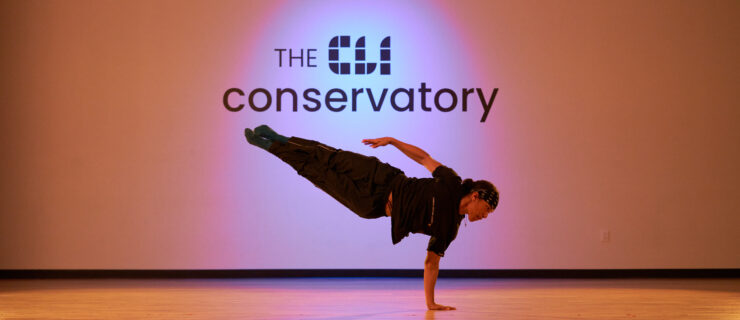Why Choreography Should Be More Than An Elective, According to Dean College Faculty Members
Imagine: It’s your first year in a dance company and the artistic director is staging a new work. She works through a few phrases of choreography and then turns to you, asking you to come up with something of your own. Are you ready?
In many of today’s most exciting companies, the choreographer/muse relationship is being disrupted in favor of collaboration. Many dancers also find that their own dancing improves after they have tried their hand at creating new work. “Choreographers want to work with performers who aren’t afraid to take risks, make bold decisions, and contribute something that will ultimately make the work stronger,” says Dean College professor of dance studies, Stephen Ursprung.
Make sure your dance degree is going to work for you in the real world. At Dean College in Franklin, Massachusetts, The Joan Phelps Palladino School of Dance is preparing their BFA and BA dancers for the changing professional world that awaits them with a special focus on dance composition. Whether you are in school with an ambition to be a professional dancer, a choreographer, or both, look for opportunities to deep dive into the process of creating dance.
Integrate choreography all semester long.
To reach your potential as a choreographer, you need to do more than check a box to fulfill an elective requirement. At Dean, the dance program offers three levels of composition in conjunction with improvisation, partnering, and creating a capstone project. Choreography is integrated throughout the training, not just in a one-off class or workshop. Ursprung says that as a result their graduates “embrace change, are quick to take initiative, and trust their creative minds.” Choreographic works by Dean students have been chosen for the American College Dance Association gala at the Kennedy Center in Washington, DC.

Scott May, courtesy Dean College
Collaborate with peers.
Dancers and choreographers need to be able to work alongside their peers both onstage and off. Dean emphasizes the importance of teamwork in their New Dancer Showcase every year, which highlights freshman dancers performing choreography by older students. “The freshmen feel an immediate connection to our program, the school, and the upperclassmen,” says Dean professor of dance, Todd Shanks, who produces the showcase. “In this way upperclassmen have an opportunity to work with an energetic, fresh group of students, a blank canvas.” Shanks has watched students grow artistically and create lifelong friendships in the process.

Dean College dancers in “Hurt” by student choreographer Abigail Marz (’19). (Scott May, courtesy Dean College)
Look for immersive opportunities.
Emerging choreographers should be looking for opportunities to see the world and try new styles of dance. The Dance Abroad Argentina program at Dean allows students the opportunity to continue their training for a full semester—earning as many as 15 credits—in the vibrant city of Buenos Aires.

Dean College dancers in “Meraki,” by student choreographer Marissa Melito (’17). (Scott May, courtesy Dean College)
Seek feedback.
The opportunity to receive real-time feedback from industry leaders on your choreography is invaluable, and being open to criticism will only strengthen your abilities as a choreographer and dancer. At Dean’s Choreographers’ Showcase, a panel of professionals provide feedback on students’ work in front of a live audience. Past judges have included noted teachers and choreographers like Michael Vernon, Levi Marsman, James Boyd, Bill Hotaling, and “So You Think You Can Dance” star Kameron Bink.

Dean College dancers in “Try It” by student choreographers Alicia Burghardt (’19) and Hannah Dicruttalo (’20). (Scott May, courtesy Dean College)
Get comfortable being uncomfortable.
For many dancers, it feels foreign to be on the other side of the creative process, but according to Ursprung, working through that discomfort is what sets Dean graduates apart. “Choreography and compositional work forces students into uncomfortable situations,” he says. “Oftentimes we impose limitations on what the students can or cannot do and this ignites their imaginations. At first it may be scary or overwhelming: Many dancers come from very rigorous technical training and get caught up in whether what they do is ‘right’ or ‘wrong.’ In a choreography class, these binaries do not exist.”




